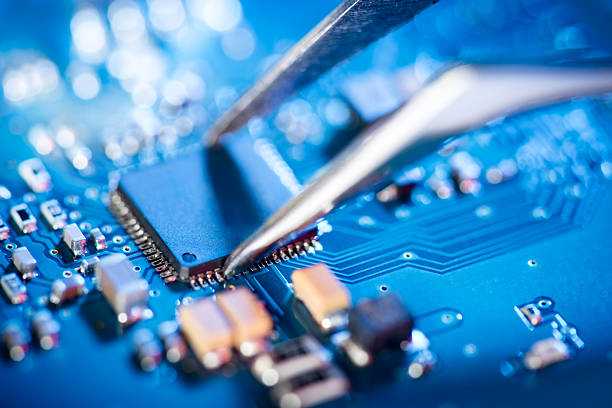What Is A CPU In A Computer

The CPU is the computer's central processing unit, also known as a processor, central processor, or microprocessor.
The CPU of a computer processes all instructions received from the computer's hardware and software.
What is a CPU in a computer?
The primary memory, control unit, and arithmetic-logic unit make up the central processing unit (CPU), which is the most important portion of any digital computer system.
.jpg)
It is the physical heart of the computer system, with different peripheral equipment, such as input/output devices and auxiliary storage units, connected to it.
In modern computers, the CPU is housed on a microprocessor, which is an integrated circuit chip.
Types of CPU
The number of cores in a CPU distinguishes it from others. CPUs used to just have one core, which confined them to do a single task.
The number of CPU cores has expanded in tandem with technological advancements, making computers faster and more efficient.
We now have CPUs with up to 100 CPU cores, each of which is dedicated to a distinct task. A core focuses on one activity while another focuses on another.
As a result, the higher the number of cores in a CPU, the faster and more efficient the computer will be.

CPUs with a single core
Single-core CPUs are the earliest kind of computer processor. These CPUs can only focus on one job at a time, hence multitasking was difficult.
When more than one application is open at the same time, the computer's performance suffers.
Although only one operation runs at a time, the subsequent actions must wait until the first is completed.
A single-core CPU contains only one core on the chip, which runs only one thread at a time. After the introduction of multi-core CPUs, the term "single-core" became popular.
Dual-core CPUs
The first multi-core CPUs are dual-core CPUs. A dual-core CPU is a single CPU with two cores and two caches operated on a single chip, giving it the appearance of two CPUs in one.
Dual-core CPUs can handle multi-tasking considerably more readily than single-core CPUs, which require the processor to switch back and forth to manage many jobs.
Dual-core processors are quicker than single-core processors but not as fast as quad-core and other higher-core processors.
.jpg)
CPUs with four cores
Quad-core CPUs are the next step in the evolution of multi-core CPUs, which followed Dual-core CPUs. Quad-core CPUs, like dual-core CPUs, may divide their task among their many cores.
This enables even faster multitasking than dual-core processors. This does not imply that a single activity will be four times faster, but rather four tasks will be processed four times faster at the same time.
People who need to run a lot of different apps at the same time can benefit from these CPUs.
Similarly, CPUs with a large number of cores, such as 6 cores, 8 cores, 10,12,14,16,18, and up to 72 cores, are commonly found in server CPUs.
What is the speed at which a CPU transfers data?
The data travels very close to the speed of light, which is 299,792,458 m/s, as it does with any device that uses electrical signals.
The medium (metal in wire) through which a signal travels determines how close it can get to the speed of light.
The majority of electrical impulses move at 75 to 90% of the speed of light.

What is CPU Virtualization?
CPU virtualization emphasizes the use of a virtual machine to run applications and instructions, giving the impression of working on a physical desktop.
All of the operations are managed by an emulator, which directs the software to follow its instructions. CPU Virtualization, on the other hand, is not an emulator.
The emulator works in the same way that a real computer does. It works in the same way as a physical machine, replicating the same copy of data and producing the same result.
The emulation function provides excellent portability and allows you to operate on a single platform while acting as though you were working on numerous systems.
Software-Based CPU Virtualization
The guest application code runs directly on the processor with software-based CPU virtualization, while the guest privileged code is translated and executed on the processor.
This is also known as Binary Translation or BT. The translated code is significantly larger and runs a little slower than the original.
Hardware-Assisted CPU Virtualization
Hardware-Assisted CPU virtualization is provided by some processors (such as Intel VT and AMD SVM). The guest can use a distinct execution mode called guest mode when using this help.
Whether it's application code or privileged code, visitor code runs in guest mode. The processor quits guest mode and enters root mode in response to certain triggers.
It is one of the most popular cloud-computing technologies in the cloud market, with the goal of producing the best results by striking a balance between performance and work efficiency while saving money and gaining access to new opportunities.
Reference
Author Bio
This user has not submitted a user bio yet
Article Comments
No Comments!
At present there are zero comments on this article.
Why not be the first to make a comment?
Similar Articles
Sponsor
Search Articles
Experts Column
Latest Articles
Featured Articles
Most Popular Articles












